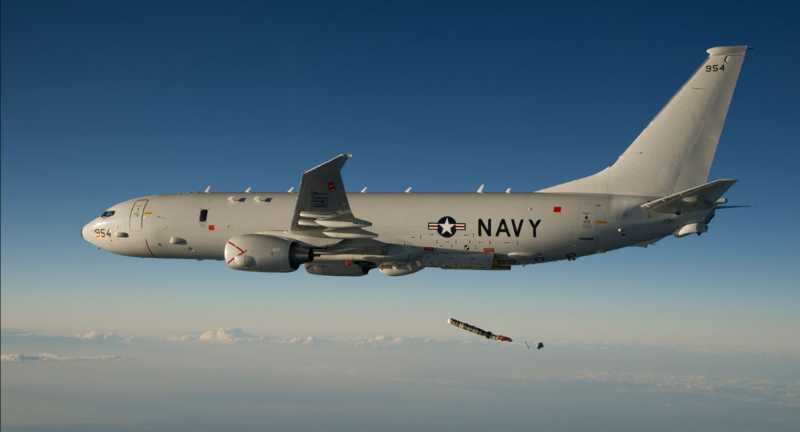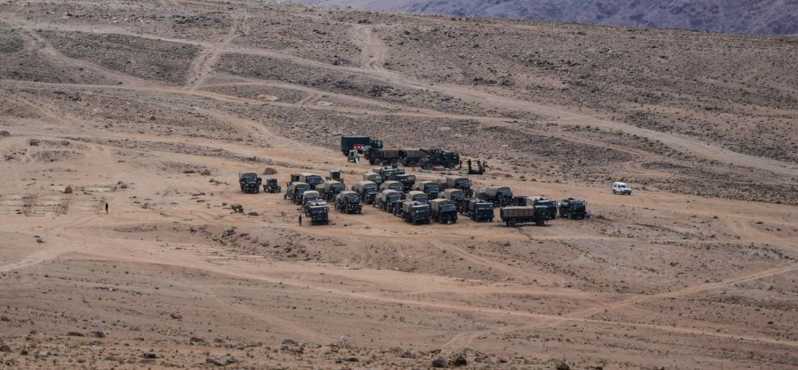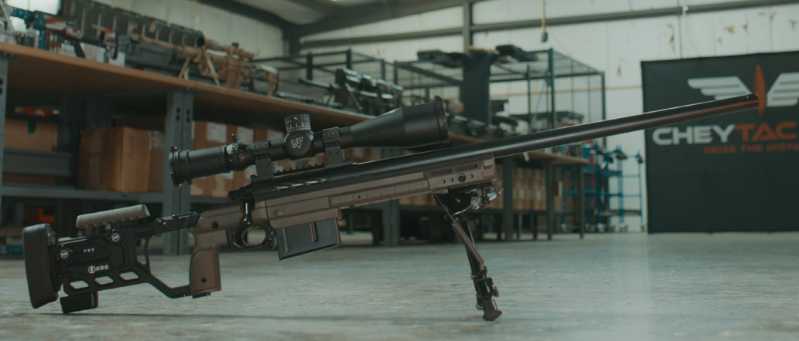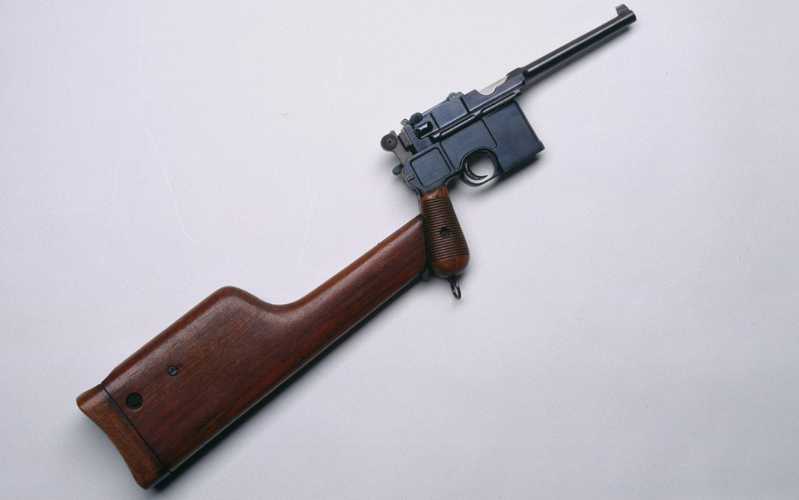Submarines are the most complex and outstanding technological weapons ever created by humans. Submarines that use nuclear power and AIP technology can stay underwater for a long time and use guided weapons such as torpedoes and missiles to deliver devastating blows to surface, underwater and land targets. They are increasingly becoming one of the most important components of the military power of maritime countries.
Germany has always had an important influence on the development of submarine technology and tactics. In the two world wars, German submarines occupied almost half of the history of submarine warfare with their excellent performance and brilliant results. After the end of World War II, Germany resumed the research and exploration of submarine technology by salvaging submarines that sank in the late war and recruiting former U-boat designers. Using export demand to maintain and promote the development of the submarine industry, gradually establish a complete and world-class conventional submarine construction industry group.
212A is a new generation of submarines built by Germany for the battlefield environment of the 21st century. It adopts new generation submarine technologies such as AIP power system. It can not only undertake near-shore "denial deterrence" combat missions, but also implement "sea-to-land" long-distance offensive operations. It is the culmination of German submarine technology after World War II. It not only has excellent performance, but also has a very beautiful appearance.
Technical preview
In April 1996, Israel’s Dolphin-class submarine was launched in Germany. This is a veritable "beautiful submarine" with a smooth appearance and smooth and beautiful lines, like a dolphin, which is pleasing to the eye and makes people like it.
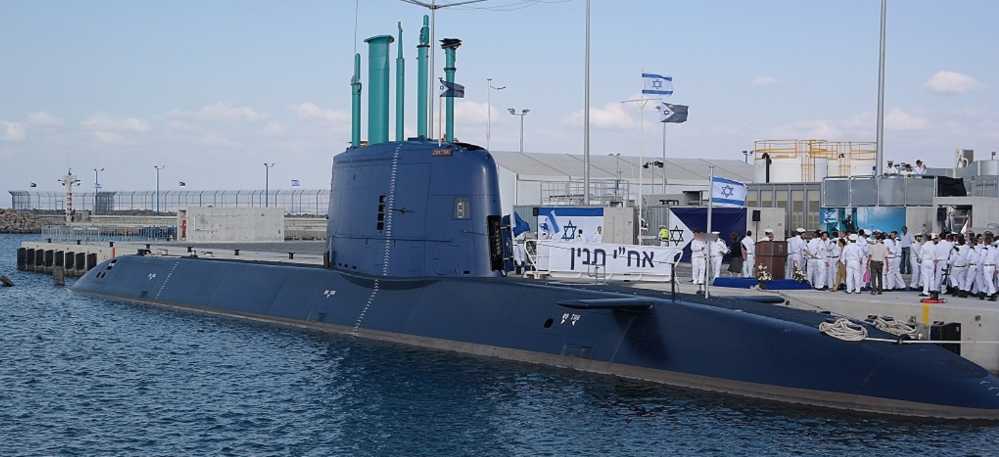
Germany’s Lübeck Engineering Office began designing the Dolphin-class for Israel in 1986, and adopted a large number of technologies developed by Germany for its next generation of submarines, such as the hull lines mainly for underwater activities, large-diameter pressure-resistant hulls, and double-deck structures. Germany is very good at using export models to try out new technologies and designs first, so as to expose problems as early as possible and make iterative improvements. The Dolphin class is quite similar to the Type 212 designed by Germany in both appearance and structure, just like the Type 212 without the AIP system.
In 1991, the design of the Type 212 was approved by the German Congress and attracted the attention of many countries. At that time, the development of Italy’s fourth-generation conventional submarines after the war was blocked. After evaluation, the Italian Navy decided to introduce the Type 212. Germany then modified the design of the Type 212 according to Italy’s requirements and finally finalized it as the Type 212A. Germany began to build the first batch of four Type 212A in 1994, and Italy built four in two batches in its own country.
The first Type 212A submarine (German U31) entered service in October 2005. It was one of the earliest fourth-generation conventional submarines to be commissioned. Its technical performance in terms of power and stealth has been greatly improved compared to the third-generation submarines. Since its launch, it has been famous for its good performance and good appearance. (The Swedish Gotland class is equivalent to the third-generation submarine equipped with a Stirling "AIP" engine; among the other major fourth-generation conventional submarines, the first Russian Lada class has been commissioned, but has not yet been mass-produced, and due to technical problems, the AIP system has not been adopted; most of the French Scorpio class users have not chosen the AIP system; the Japanese Soryu class only began to serve in 2009.)
Technical Appreciation
Weapons, as products related to survival, must contain the superb wisdom and exquisite skills of mankind. While having use value, they also have certain aesthetic value. While weapons with excellent performance have a strong deterrent effect on the enemy, they also give the confidence to defeat the opponent, making people feel safe and fond of them.
Weapons are based on practicality and applicability. The beauty of weapons is the organic unity of external formal beauty and internal functional beauty. Function determines form, and form obeys function. External formal beauty is often a natural presentation of internal technical performance. 212A The smooth and symmetrical lines of the 212A submarine are the external manifestation of its excellent hydrodynamic and acoustic performance, which can be described as "poetic and elegant"; in sharp contrast, the conning tower of some conventional submarines is "tall and upright", with an abrupt and uncoordinated appearance, which inevitably brings defects in hydrodynamic and acoustic performance.
Formal beauty
1. Hull shape. In order to adapt to long-term underwater navigation and increasingly severe hydroacoustic environment, the 212A type attaches great importance to hull design. In order to reduce navigation resistance, radiation noise and sonar target intensity, a long teardrop-shaped low-resistance line is adopted. The conning tower is low, with a smooth transition with the superstructure and hull, the outer surface is smooth and smooth, the openings can be closed, the hull lines are smooth, the proportions are symmetrical, and the appearance conforms to the general rules of formal beauty. 212A The length-to-diameter ratio of the type is small (about 8), and the hull rudder is matched with the X-shaped tail rudder. It has good underwater maneuverability and is especially suitable for activities in near-shore shallow waters. The streamlined hull, as smooth as a dolphin, gives people an aesthetic association of speed, agility and quietness, and creates an aesthetic conception of softness and rigidity.
2. Hull structure. The 212A type cleverly adopts a single-double hybrid hull design to solve the problem of fuel cell AIP system fuel storage, retaining the advantages of single-hull submarines and minimizing the impact of the AIP system on the submarine’s hydrodynamic performance (with the addition of the AIP system, the length of the boat is shorter than that of the 209/1400 type port boat).
The layout of the internal cabins of the 212A type is compact and reasonable. The front part of the hull adopts a single-hull structure. The pressure-resistant hull has a diameter of 6.8 meters and a double deck, which separates three layers of space, which is shorter than the previous generation with the same displacement. The 209/1400 type has significantly improved the living conditions of the crew; the rear of the hull adopts a double-hull structure, which is a pressure-resistant hull with a diameter of 5.5 meters. The outside is covered with a lightweight composite shell that can be quickly disassembled and bolted to the support frame. The double hull is a permeable structure with 28 metal hydride hydrogen storage tanks fixed and 2 liquid oxygen storage tanks arranged in the tail superstructure.
212A type’s command platform enclosure, superstructure and other non-pressure hulls are all made of composite materials, which are corrosion-resistant and reduce the weight of the structure. They are bolted to the frame and can be quickly disassembled and assembled for easy maintenance. The dolphin skin-like material texture reflects Germany’s exquisite material technology and processing technology.
We have all experienced the joy of solving complex and difficult problems with simple and effective methods. When problems are solved, the situation becomes harmonious and orderly. Scientific and technological products are essentially the fruits of human hard work. How can we not feel happy and beautiful when facing the fruitful harvest?
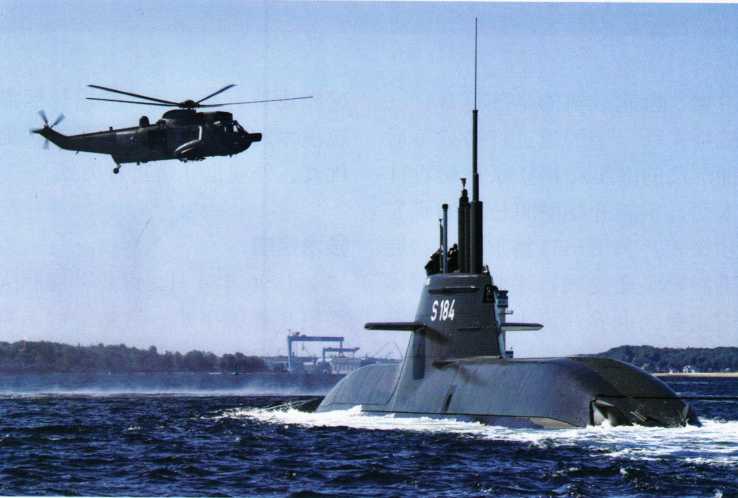
Powerful
With the revolutionary development of military technology, the aesthetics of weapons will inevitably have certain differences. The fourth-generation conventional submarine adopts an AIP power system and is active underwater most of the time. At the same time, it has to face the tremendous progress of acoustic detection technology. From the beginning of the design, it pursues drag reduction and noise reduction, so the beauty is to achieve low drag and low noise functions. The Type 212A is a silent underwater "killer" like a shark, with stealth, aggressiveness, sensitivity, and agility as its performance orientation.
1. Strong comprehensive stealth. Sun Tzu said: A good defender hides under the nine earths. The biggest advantage of submarines lies in stealth. The stealth performance of the fourth-generation conventional submarines in physical fields such as sound, magnetism, electricity, and infrared has been greatly improved compared with the previous generation of submarines. The Type 212A has a small wet surface area, a low command platform enclosure, and both sides are tilted inward. The transition between the superstructure and the hull is smooth to avoid vertical reflection of sound waves. In addition, the use of an X-shaped tail rudder effectively reduces the acoustic target intensity of the submarine, making it more difficult for the enemy’s active sonar to detect.
The surface of the 212A type hull is smooth, and the lifting devices, water outlets and other surface openings are all equipped with movable covers, which can be closed "seamlessly", reducing the fluid noise during navigation. Low-noise electromechanical equipment, floating raft vibration reduction technology, high-power low-speed propulsion motors, 7-blade large side-slant propellers and other mature technical means are widely used to effectively weaken the positioning ability of the enemy’s passive sonar.
The pressure-resistant hull of the 212A type is built with high-strength low-magnetic stainless steel, which effectively reduces the range of enemy magnetic detection and magnetic fuse weapons.
The lifting devices such as periscopes, optoelectronic masts, and snorkels have effectively shortened the detection distance of enemy radars by improving the shape of the exposed parts, using composite materials and anti-radar wave coatings, etc.; various masts have streamlined cross-sections, which reduce the wave-making tracks on the sea surface. Even the surface coating color of the submarine has been carefully considered according to the hydrological conditions of the sea area, effectively increasing the difficulty of enemy optical detection.
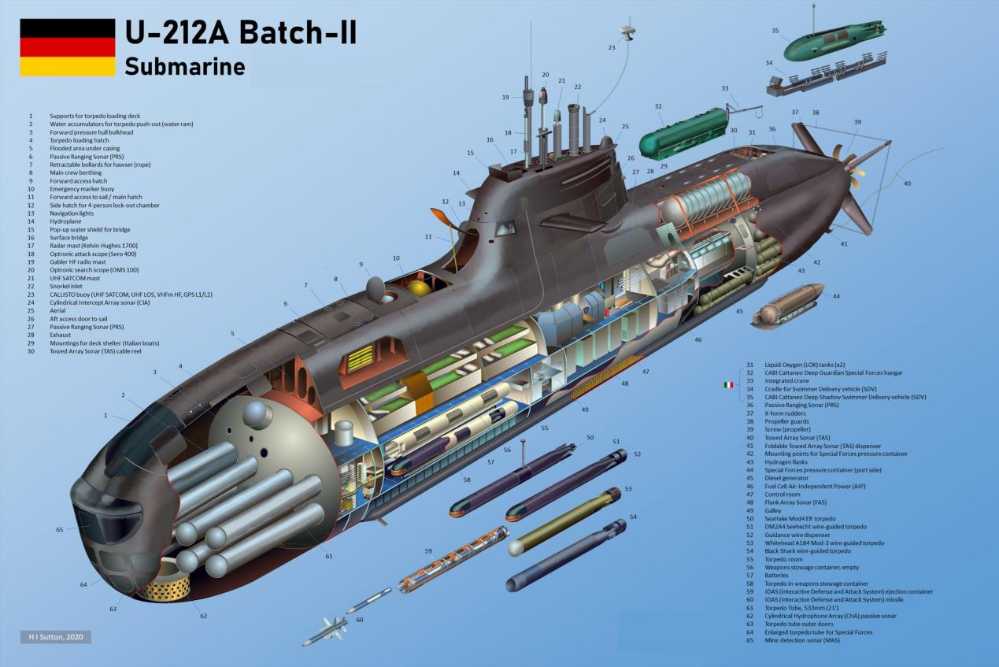
2. Revolutionary AIP (Air Independent Propulsion) device. Equipped with AIP auxiliary power system is one of the main technical features of the fourth-generation conventional submarines. AIP technology has greatly increased the time for conventional submarines to sail underwater at low speeds. For example, the Type 212A has a maximum speed of 8 knots when sailing with a fuel cell AIP system, and its underwater endurance exceeds 1,638 nautical miles, which is more than 4 times that of the Type 209/1200; it can sail underwater continuously for 2~3 weeks without using a snorkel. This has a profound impact on future naval battles.
Type 212A is the world’s first conventional submarine equipped with a fuel cell AIP system. The fuel cell AIP system has high efficiency (greater than 60%), low noise, no exhaust gas, and low waste heat. Several other AIP systems generally have disadvantages such as many moving parts, high noise, the need to discharge exhaust gas outside the boat, and limited working depth.
Although high-power permanent magnet propulsion motors are not standard for the fourth-generation conventional submarines, they are smaller, lighter, and quieter than the previous generation of propulsion motors at the same output power. They are simple in structure and easy to maintain, and can achieve stepless speed regulation, making the 212A type more powerful. Italy decided to introduce the 212A submarine largely because of its mature fuel cell AIP and high-power permanent magnet propulsion motor technology.
The detection and perception equipment is complete and fully functional. The 212A type’s detection and perception system consists of an integrated sonar system, periscope, optoelectronic mast, radar, communication, electronic support, navigation and other equipment, and its performance is stronger than that of the previous generation of submarines. Among them, the CSU-90 integrated sonar system of STN Atlas of Germany consists of active/passive medium-frequency sonar at the bow (for medium and short distances), medium-low frequency passive side array sonar (for medium and long-distance search and warning, but there is a blind spot at the bow and stern of the boat), towed linear array low-frequency passive sonar (for long-distance target detection, but cannot directly determine the target direction), three-element passive ranging sonar (for medium-distance accurate measurement of target distance and heading), reconnaissance sonar (close-range capture of enemy sonar and torpedo high-frequency signals), mine detection/collision avoidance sonar, and noise monitor of the boat. Each sonar has its own unique scope of application and advantages due to its different working frequency bands and installation locations.
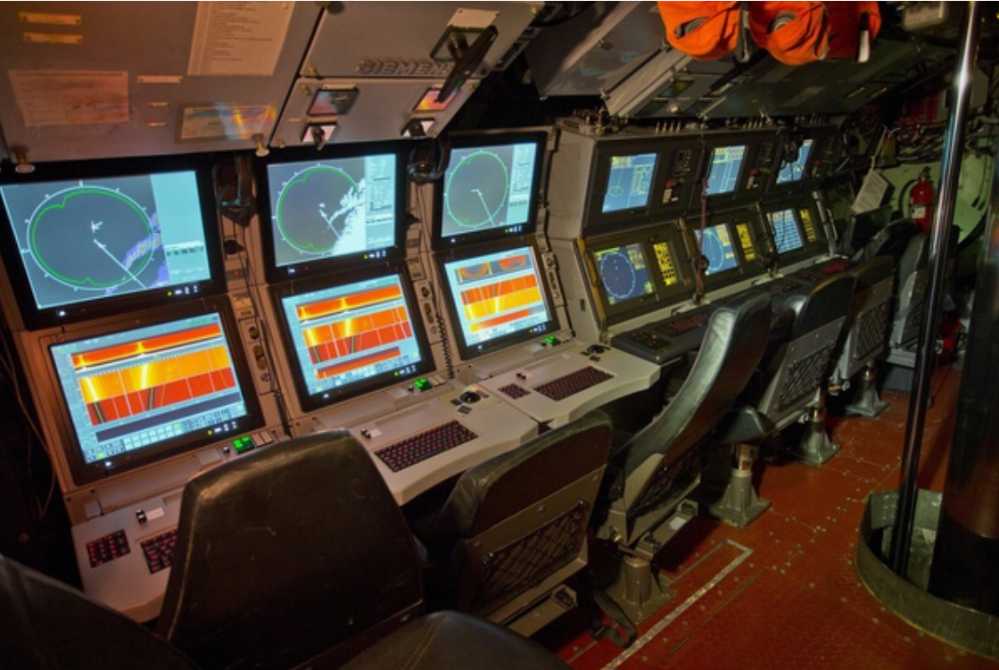
Germany’s optoelectronic mast technology is relatively mature, and the 212A type has been gradually adopted in batches. The adoption of optoelectronic mast technology makes the layout of the submarine command center more flexible (no longer has to be arranged directly below the command platform shell), and its automatic and rapid search function on the water surface reduces the workload of the duty officer, and can also enhance the submarine’s optical detection and perception capabilities through information sharing.
4. Highly automated boat operation and combat command and control system. The automation level of the 212A type has been greatly improved compared with the previous generation of boats. The operation control and combat command center is located in the middle of the submarine, with a crew of 27 people (including 8 officers). The L-shaped route and power system control console is located on the port side; the operator can set the course and depth through the integrated route control system. The system automatically controls the rudder angle and trim, which greatly reduces the operator’s burden and can be operated by one person in special circumstances.
MSI-90U Mk2 integrated combat command and control system is the "brain" of Type 212A; the system adopts a distributed structure (centralized operation and management, decentralized control functions), and uses a high-speed communication network to connect integrated sonar, weapon control, radar, electronic warfare, communication, navigation and other systems into an organic whole, processing data from various sensors, identifying targets, trajectory analysis and threat judgment, assisting decision-making, calculating and setting weapon fire control parameters, and controlling weapons to attack targets; it can also share combat intelligence information and battlefield situation with surface ships through high-speed data links as a node of network-centric warfare, and conduct coordinated operations, greatly improving the overall combat effectiveness of Type 212A.
5. Powerful attack capability. Just like sharks need sharp teeth, the Type 212A is equipped with 6 533 mm bow torpedo tubes that can carry 12 torpedoes. It uses two launch modes, hydraulic and self-propelled, and can launch high-performance heavy wire-guided torpedoes and electric torpedoes at full depth. The weapon system of the Type 212A adopts an open architecture, which is compatible with weapons from different sources to the maximum extent, such as the German DM2A4, the Italian "Black Shark" electric wire-guided torpedo and the American Mk48ADCAP thermal power wire-guided torpedo. It can also be equipped with submarine-launched anti-ship missiles, submarine-to-air missiles, and land-attack cruise missiles as needed to carry out precision strikes on surface ships, submarines, anti-submarine aircraft and land targets.
6. Adopt modular design and construction technology. From Type 209 to Type 212A, Germany has become familiar with the design and construction of submarines using modular technology. According to different tasks and requirements, different functional modules can be installed on the basic model platform, which can effectively shorten the design and construction cycle of submarines, and make submarine maintenance and modernization more convenient.
The photoelectric mast, radar and other lifting devices in the command tower enclosure are also modularly designed, and corresponding functional modules can be added and replaced according to different mission requirements. Germany has developed some innovative flexible load modules for the 212A type, such as the drone release rod module and the mast module equipped with light weapons, which improves the multi-task capability of the submarine.
The 212A type has superior performance, but it is expensive and has high requirements for use and maintenance. It is more suitable for developed countries with a good industrial base in the West. The functional beauty of weapons is not the more comprehensive and powerful the better. Everything has a price. Excessive pursuit of performance indicators will inevitably lead to complex structure, reduced reliability, high maintenance requirements, and low cost-effectiveness. According to subjective and objective conditions, the pursuit of weapon performance by weapon users should be limited to being useful, sufficient, and applicable. Many weapons that seem "simple and crude" but "reliable and effective" to use, such as the AK-47 rifle (adaptable to harsh environments and low prices), are also very functional.
Improvement and export
Each batch of the 212A type has different degrees of technical improvement. For example, Germany’s second batch of 212A type has made improvements in supporting special operations, etc. The 212CD type that Norway will soon equip will make major modifications to the hull line, increase the reflection angle of active sonar signals on both sides of the hull, further reduce the sonar target intensity, and reserve space for special operations teams in the crew compartment. With the development of lithium-ion battery manufacturing technology and battery management technology, its safety has been greatly improved, and it has mature conditions for installation. The last two Japanese Soryu-class and the latest Taigei-class both use lithium-ion batteries. Germany and Italy also plan to replace lead-acid batteries with lithium-ion batteries as energy storage devices on the new batch of 212A types. The discharge time of lithium-ion batteries of the same volume is twice that of lead-acid batteries, and the discharge speed is four times that of the latter, which will greatly improve the submarine’s underwater high-speed navigation time and battlefield maneuverability.
After the war, Western countries often jointly developed complex technical equipment such as aircraft and ships, leveraging each other’s strengths, avoiding weaknesses, and spreading research and development costs. The outstanding technical performance of the 212A attracted the attention of many Western countries. Among them, Italy is a veteran submarine technology powerhouse. Its submarine forces performed well in the two world wars. After World War II, due to its limited domestic demand and its failure to enter the international submarine market, the submarine construction industry was weak in development and the key technologies required for the new generation of submarines could not be completed in time. Therefore, it decided to introduce the technology of the German 212A submarine and build it in its own country. Italian submarine construction companies represented by Fincantieri Group are preparing to develop the future new submarine (NFS) based on the digestion and absorption of the key technologies of the 212A, combined with their own advantageous technologies, in an attempt to return to the first echelon of the world’s conventional submarine design and construction. In February 2017, Norway announced that it would jointly develop the Type 212NG submarine (later renamed Type 212CD) with Germany based on the Type 212A. Germany will purchase two and Norway will purchase four (replacing the existing six Ula-class submarines). The German submarine sales group, led by ThyssenKrupp, is also bidding for the Netherlands’ new generation submarine project with a design based on Type 212CD technology.
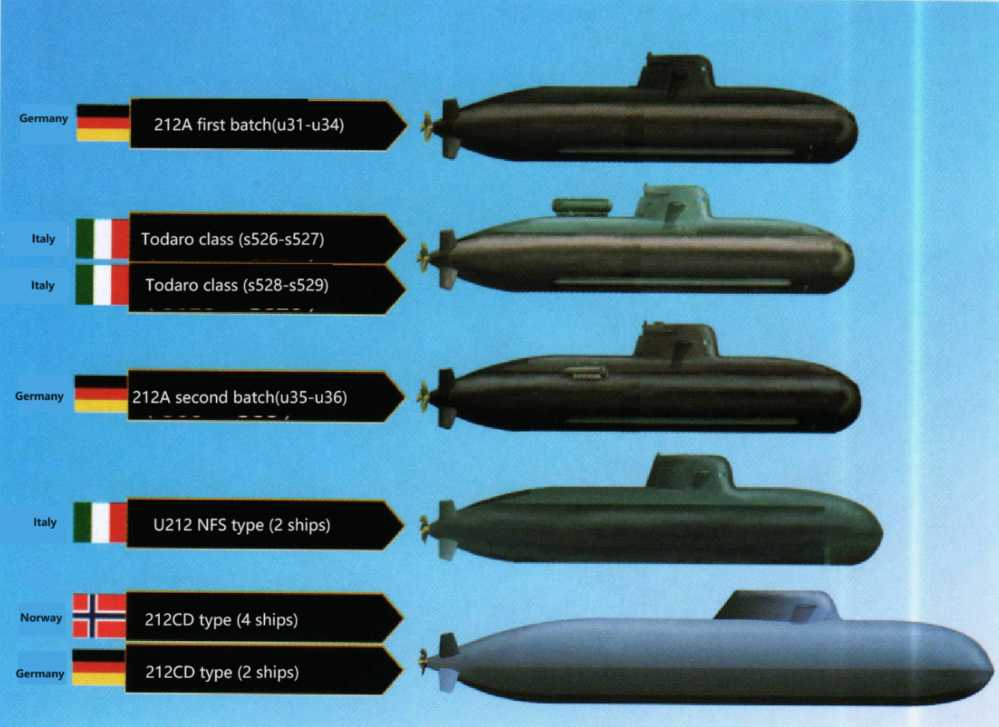
Conclusion
From the perspective of weapon aesthetics, the aesthetic standards of submarines not only vary from era to era, but also have different styles and types in the same era. Just like the handsome men and beautiful women around us, the German Type 212A submarine can be called "beautiful and exquisite", while the Russian submarine is relatively "rough", showing another style. The design of Model 212A perfectly combines the inner functional beauty with the outer formal beauty. It can be regarded as a masterpiece of industrial aesthetics. It can be appreciated from different angles and levels just like a famous painting.




